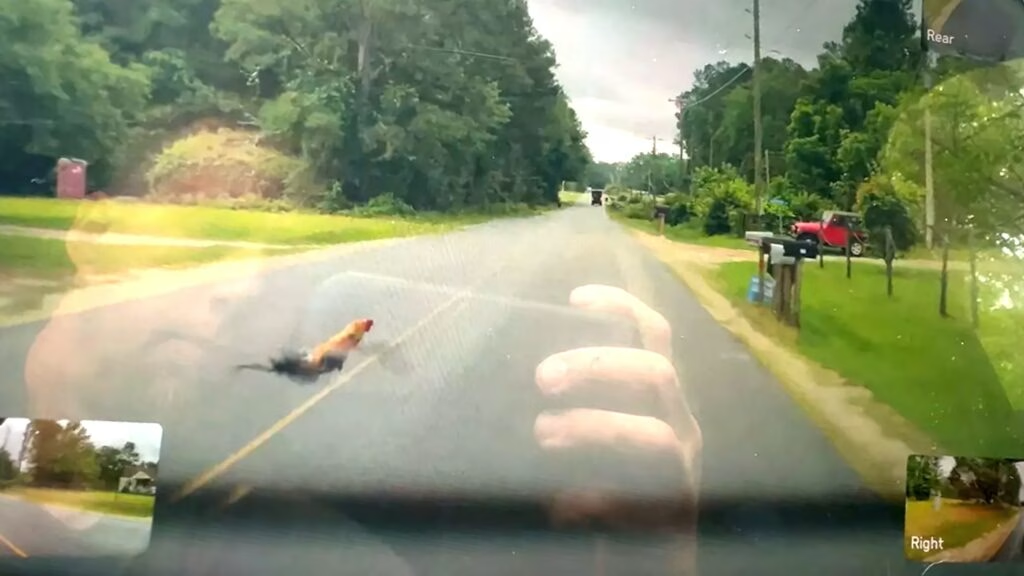A recent incident involving a Tesla equipped with Full Self-Driving (FSD) technology has sparked conversations about the system’s capabilities, particularly when it comes to detecting smaller animals on the road. Imagine cruising down a rural highway at about 45 mph, and suddenly, a chicken decides it’s time to cross. This scenario unfolded for a Tesla driver, who shared their experience on the Cybertruck Owners Club forums, and it raises some intriguing questions about the current state of autonomous driving technology.
Why Did the Tesla Fail to Acknowledge the Impact?
In the video shared by the driver, the chicken attempts to cross the road but misjudges the speed of the approaching Tesla. The result? A collision that, according to the driver, was barely noticeable. They reported not feeling any impact or hearing a thud, which leads us to wonder: Shouldn’t a sophisticated system like FSD register such an event? It seems that smaller animals, like chickens and even owls, might be slipping through the cracks of Tesla’s detection capabilities.
This isn’t an isolated incident. Another user recounted a close call with an owl while using FSD on a rural road. They had to slam on the brakes to avoid hitting the bird, and they backed up their claim with video evidence. Such experiences highlight a potential blind spot in the FSD system when it comes to smaller roadside obstacles.
Can FSD Handle Larger Obstacles Better?
Interestingly, not all encounters have ended in mishaps. One user shared a video where their Cybertruck successfully stopped for a Canadian Goose that was standing in the middle of the lane. This particular goose, blending into the pavement, could have easily been mistaken for road debris. However, FSD recognized the obstacle and slowed down, showcasing that while the system may struggle with smaller animals, it can still perform well under certain conditions.
These mixed results raise an important point about the technology behind FSD. While Tesla’s system is designed to learn and improve over time through real-world data, it appears that the current iteration still has room for growth, especially in recognizing smaller animals. This could be where additional technologies, like lidar or radar, might provide a more comprehensive solution for detecting all kinds of obstacles on the road.
What Does This Mean for the Future of Autonomous Driving?
As we look ahead, the challenges faced by Tesla’s FSD system underscore the complexities of developing fully autonomous vehicles. The technology is advancing rapidly, but incidents like these remind us that it’s still a work in progress. For animal lovers and everyday drivers alike, it’s a reminder of the importance of vigilance on the road—both for human drivers and for the technology that’s designed to assist them.
So, what’s the takeaway here? The journey toward fully autonomous driving isn’t just about perfecting the technology; it’s about understanding its limitations and making smarter adjustments along the way. If you’re a Tesla owner or considering the leap into autonomous driving, keep an eye on how these systems evolve. After all, the road ahead is still being paved, and every mile brings new lessons.

